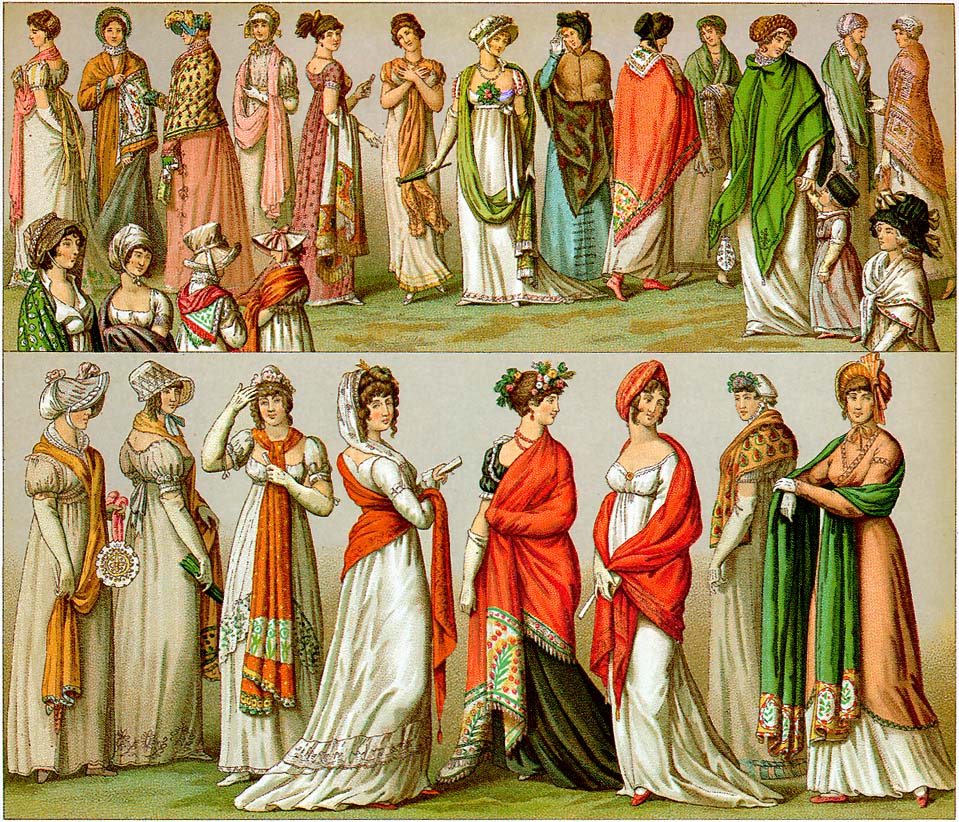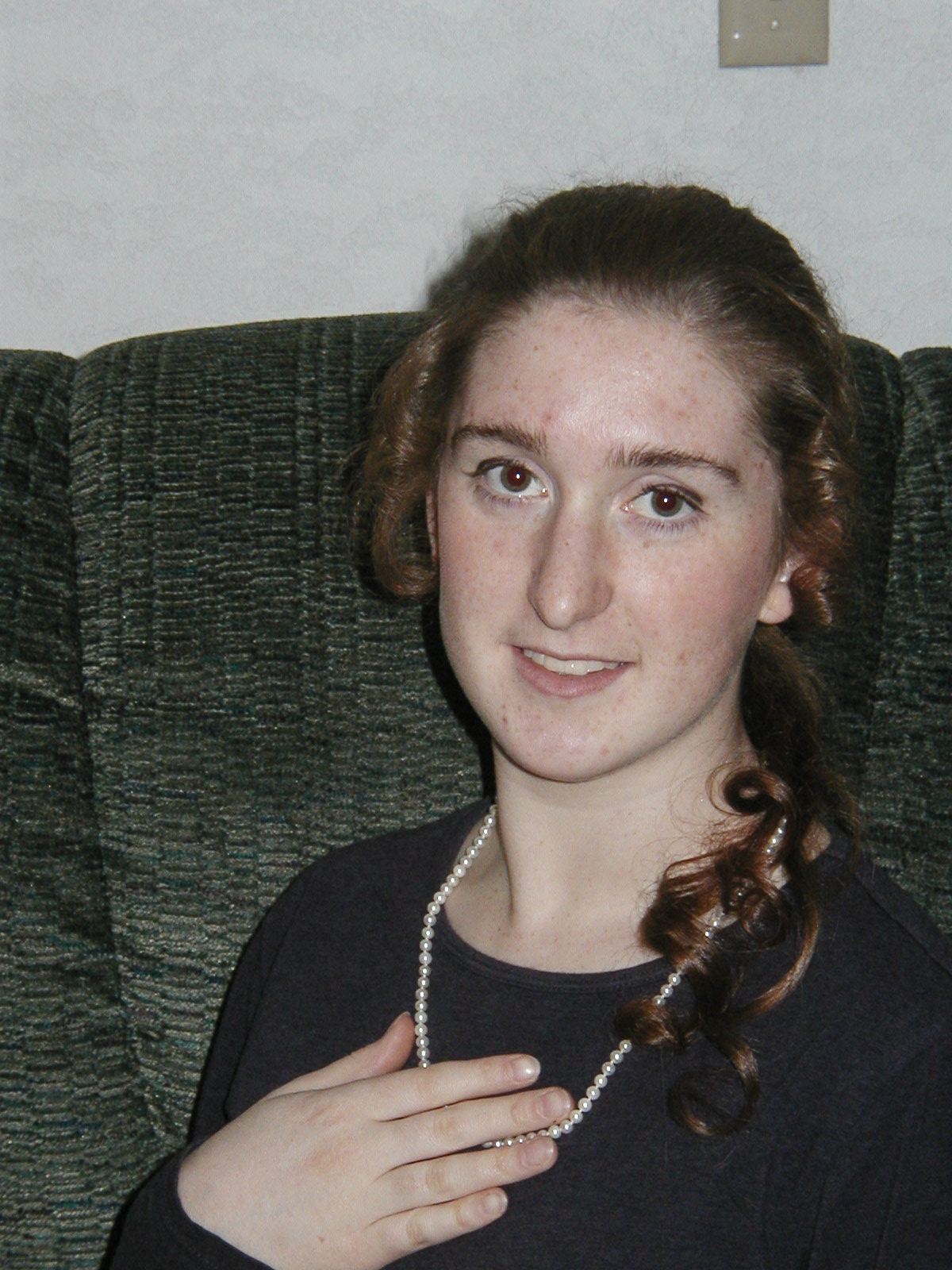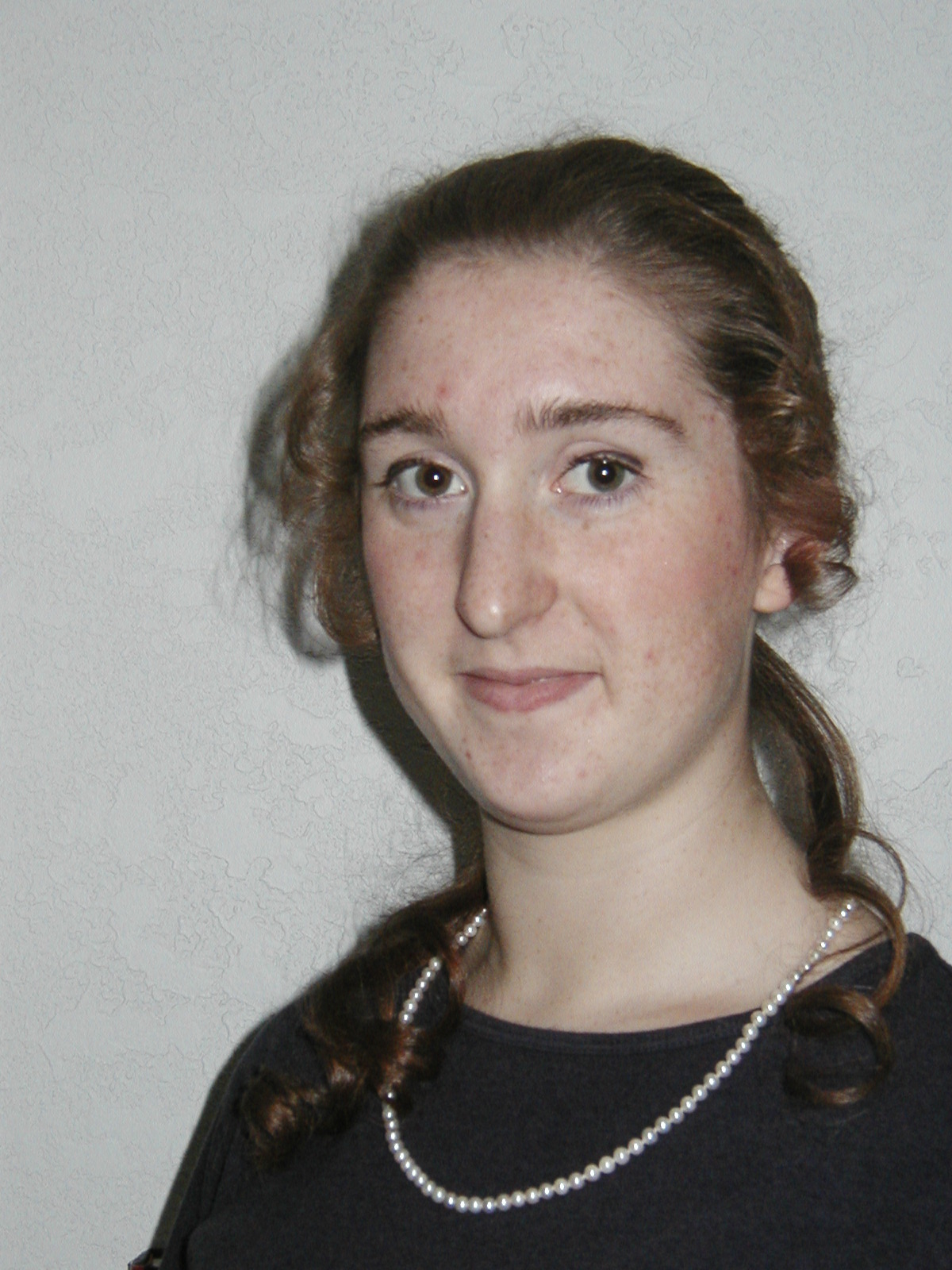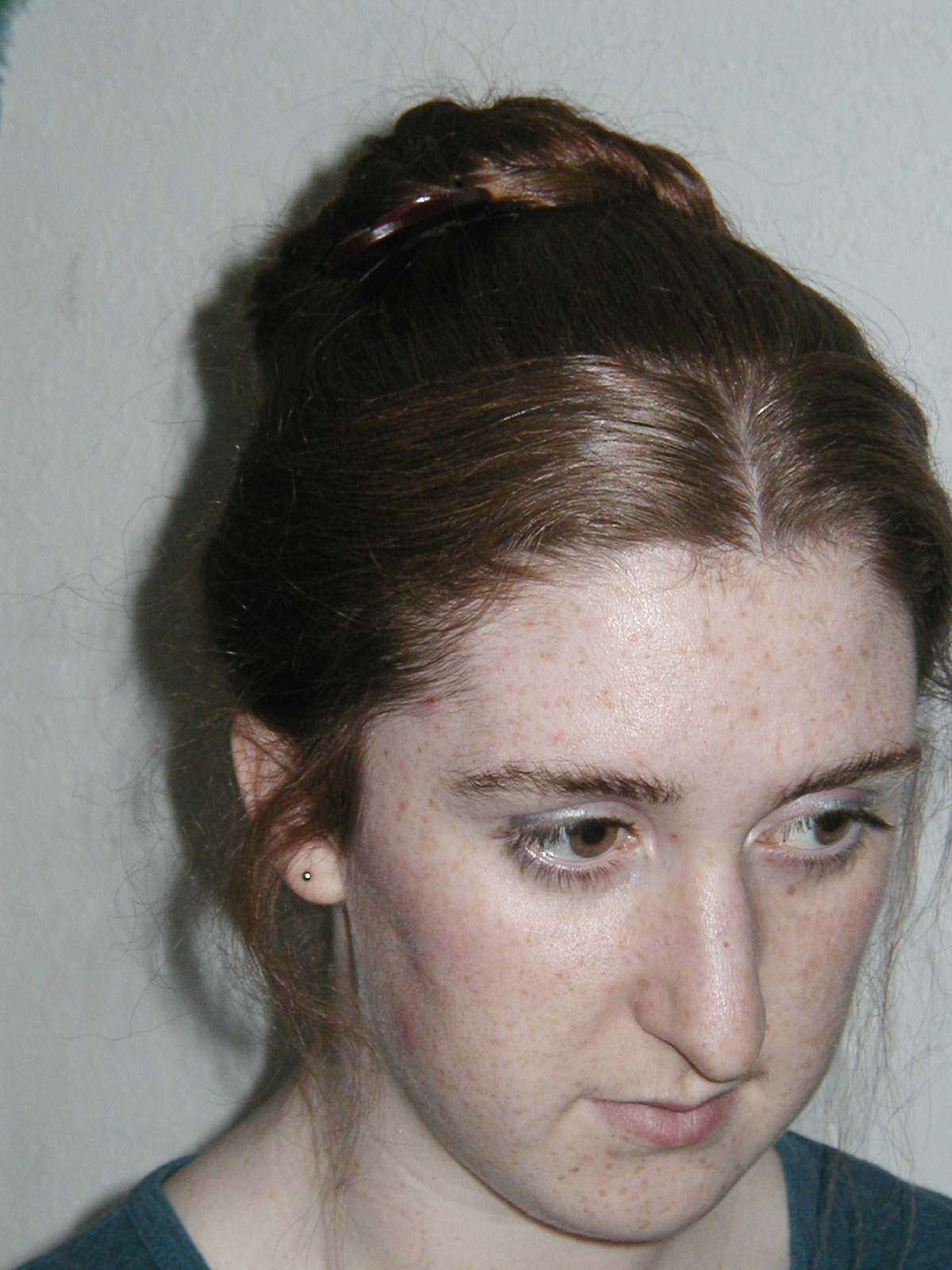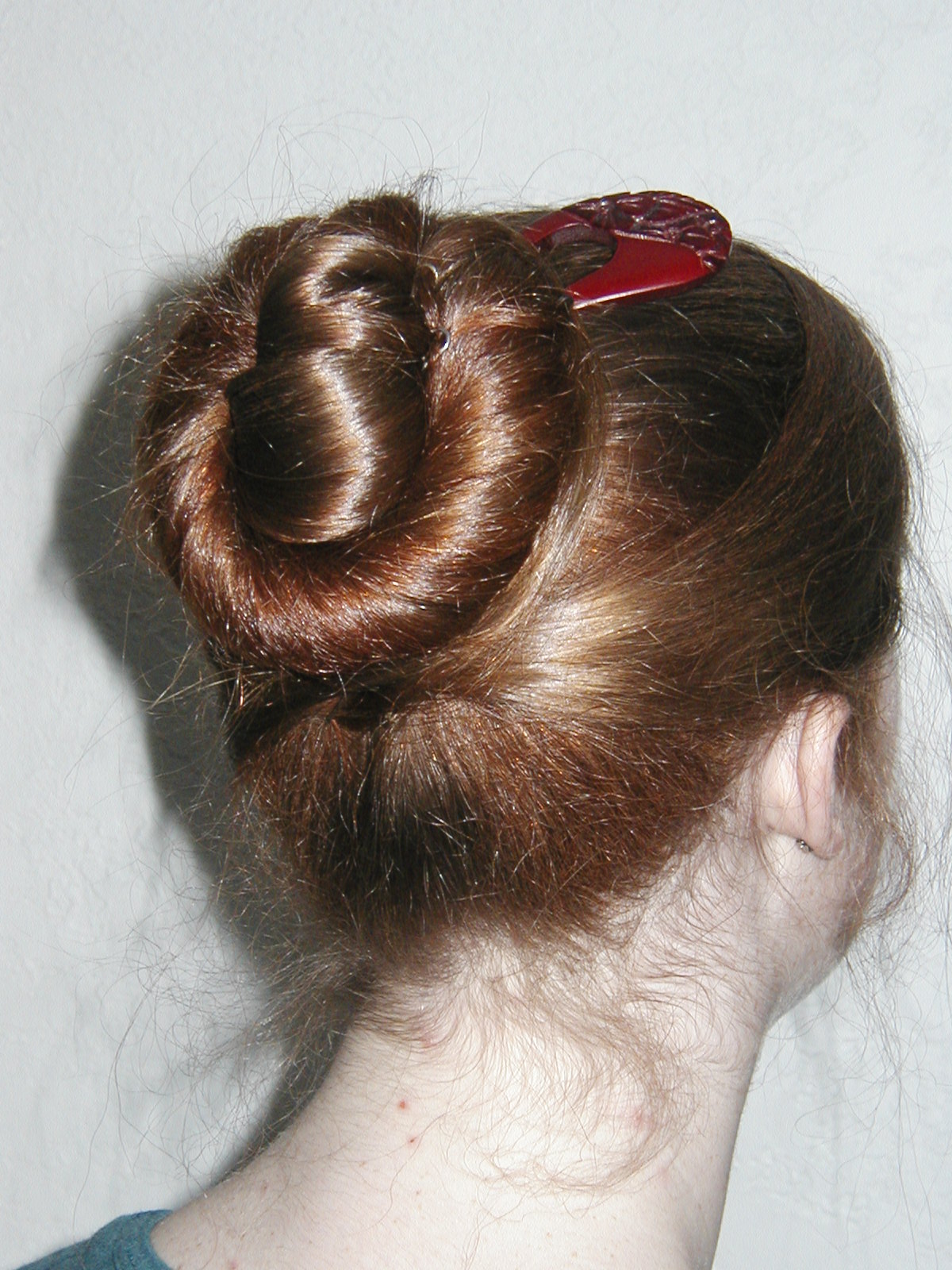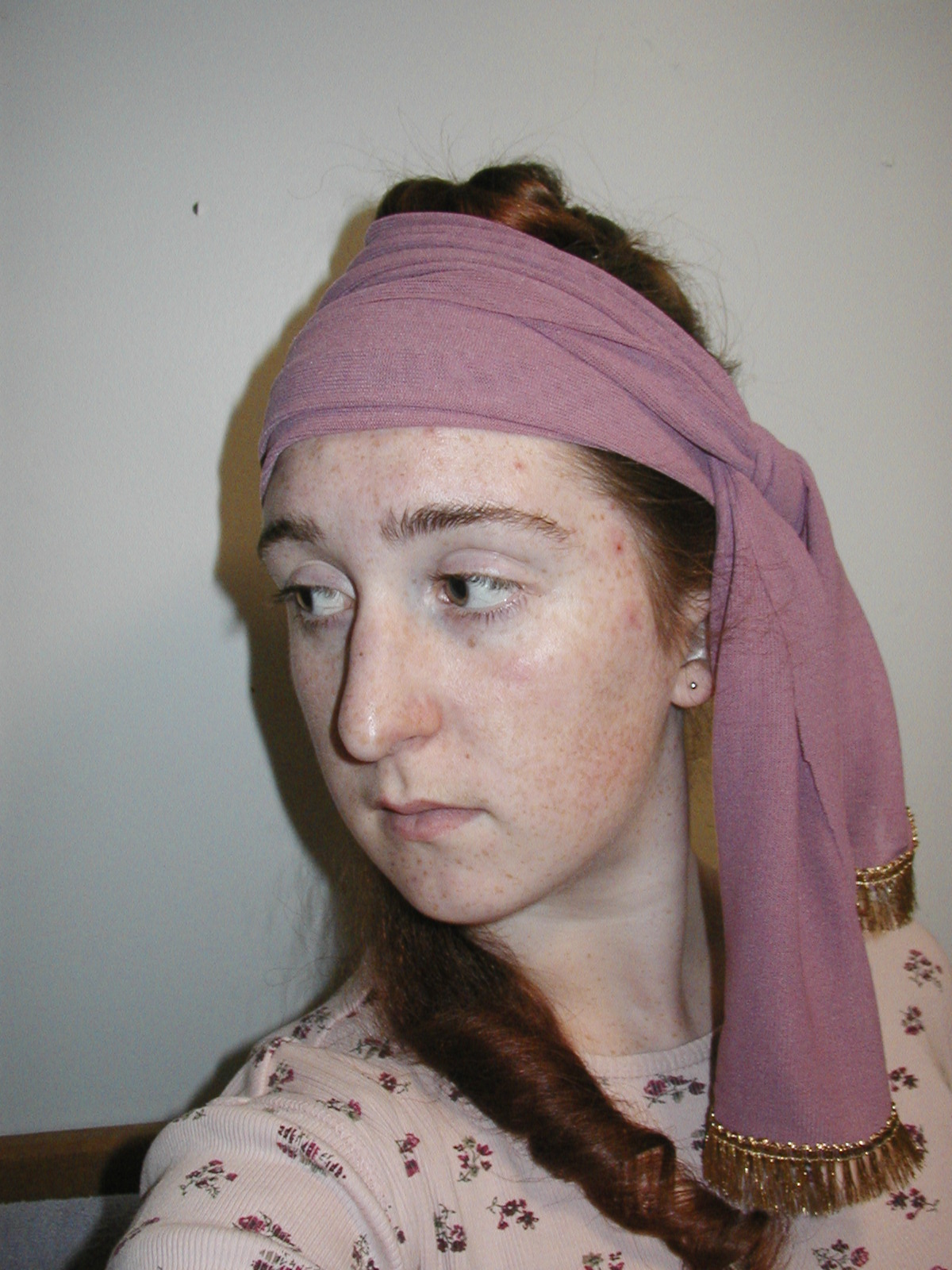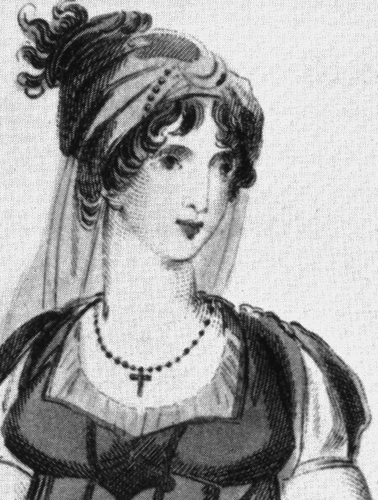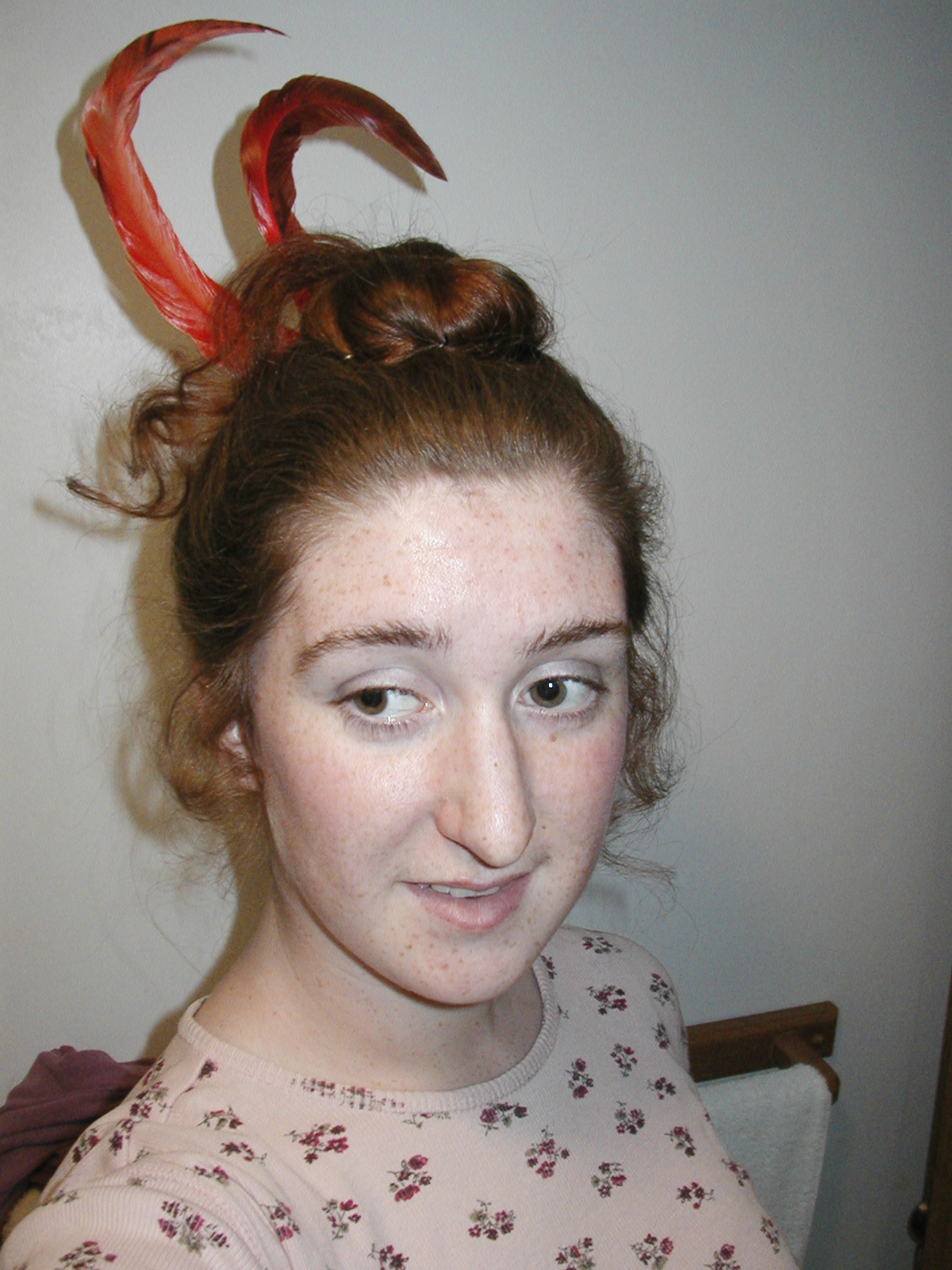Hairstyles:
Listed here are some common Regency hairstyles for everyday and ballroom events. For more historical styles from other eras including Victorian, Roman and Greek, Elizabethan, and Medieval, visit http://ups-downs-hair.blogspot.com. Most Regency women had very long hair; Jane Austen and her sister had hair to their ankles, but some women cut their hair very short in a style called "A La Guillotine," which was named so because women in France who were beheaded during the French Revolution had to have their hair cut very short so it wouldn't catch in the blade.
1.) Here is a simple Regency style for any length or type of hair. It is understated yet sweet, so I call it the "Jane Bennet."
~~~ 3.) This is an exquisitely simple do that works for all types of hair. It is so elegant and delicate. This style was worn in both the Regency and early Victorian eras, and then again in the very late Victorian era. You can use any type of hair comb in it. I used an oriental comb, but a silver one would be more period.
~~~ 5.) Here is one of those Regency styles that was definitely borrowed from
the Orient. It is the demi-turban, which is basically a swatch of cloth
wrapped around the head and tied in place. It works best with a high
bun. It also resembles those styles worn in the 1920's.
~~~ 7.) Here is a turban made of a coral silk scrap found in the remnants section of the fabric store. The fabric was less than three dollars for an amazing iridescent quality Dupiani silk. For little extras like turbans, never buy fabric from a bolt. You can always find a cute cheap remnant. I added a long strand of black and blue pearls, two
peacock feather earrings, and the abalone pendant from a necklace for
trimmings, and held everything in place with bobby pins. The fabric was
basically wrapped around my head twice and pinned closed in back under
the bun. Some rose glass earrings and curls completed the look.
~~~ 9.) This is the style I wore to our Christmas choir concert. It is really simple: just a regular figure eight with an extra curl. Caroline Bingley wears something like it in "Pride and Prejudice." This is perfect for a semi-formal Christmas party. Don't use a ponytail holder because it will show.
~~~ | 2.) Because this is not frilly, yet shows a care for personal appearance, I call it the "Eleanor Dashwood." It is based on Hattie Morahan's London ballroom style in the newest "Sense and Sensibility." The open twists are especially becoming, and the bun should be loose and high on the head to give the illusion of a crown on the back of the head. 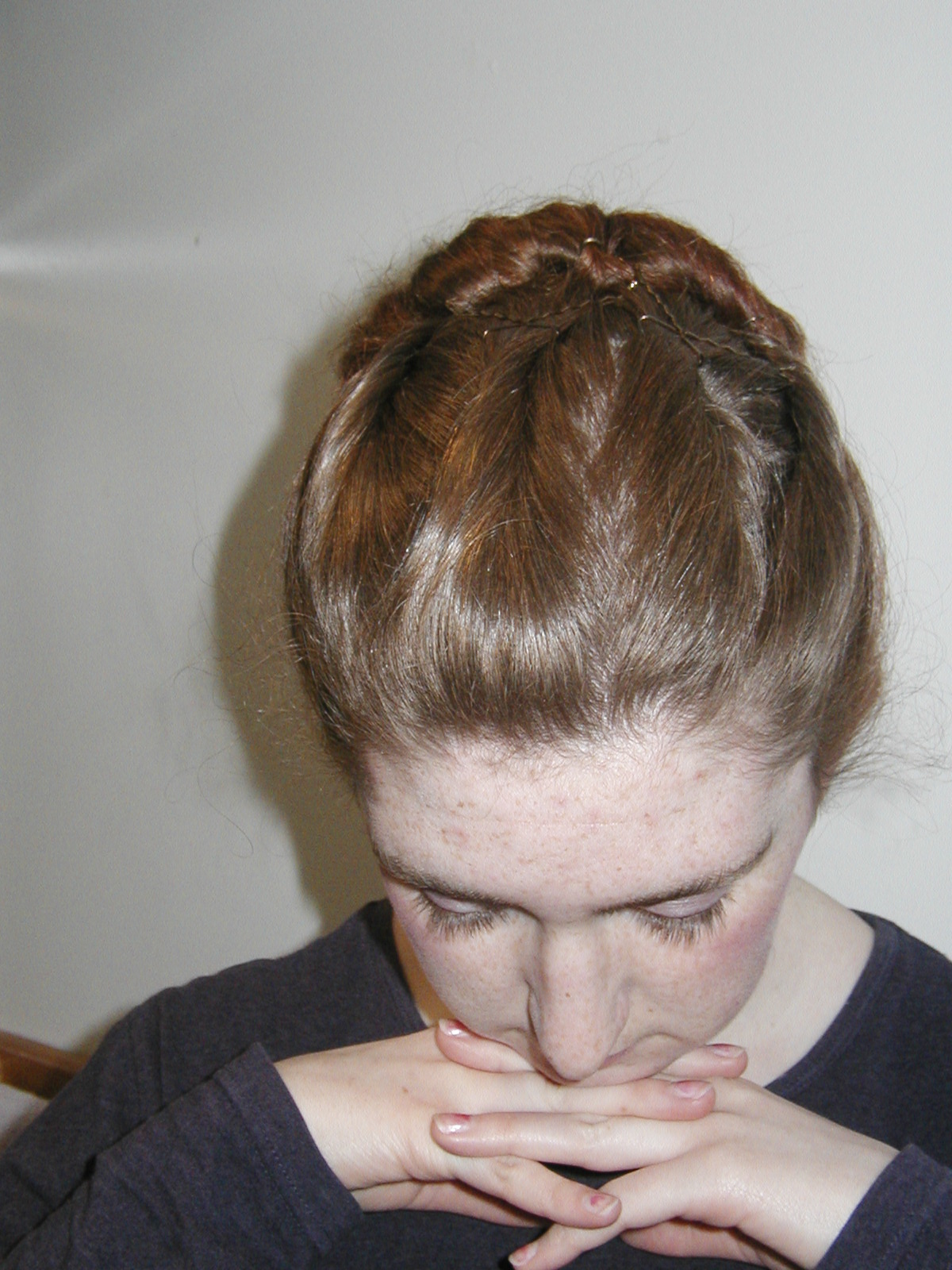 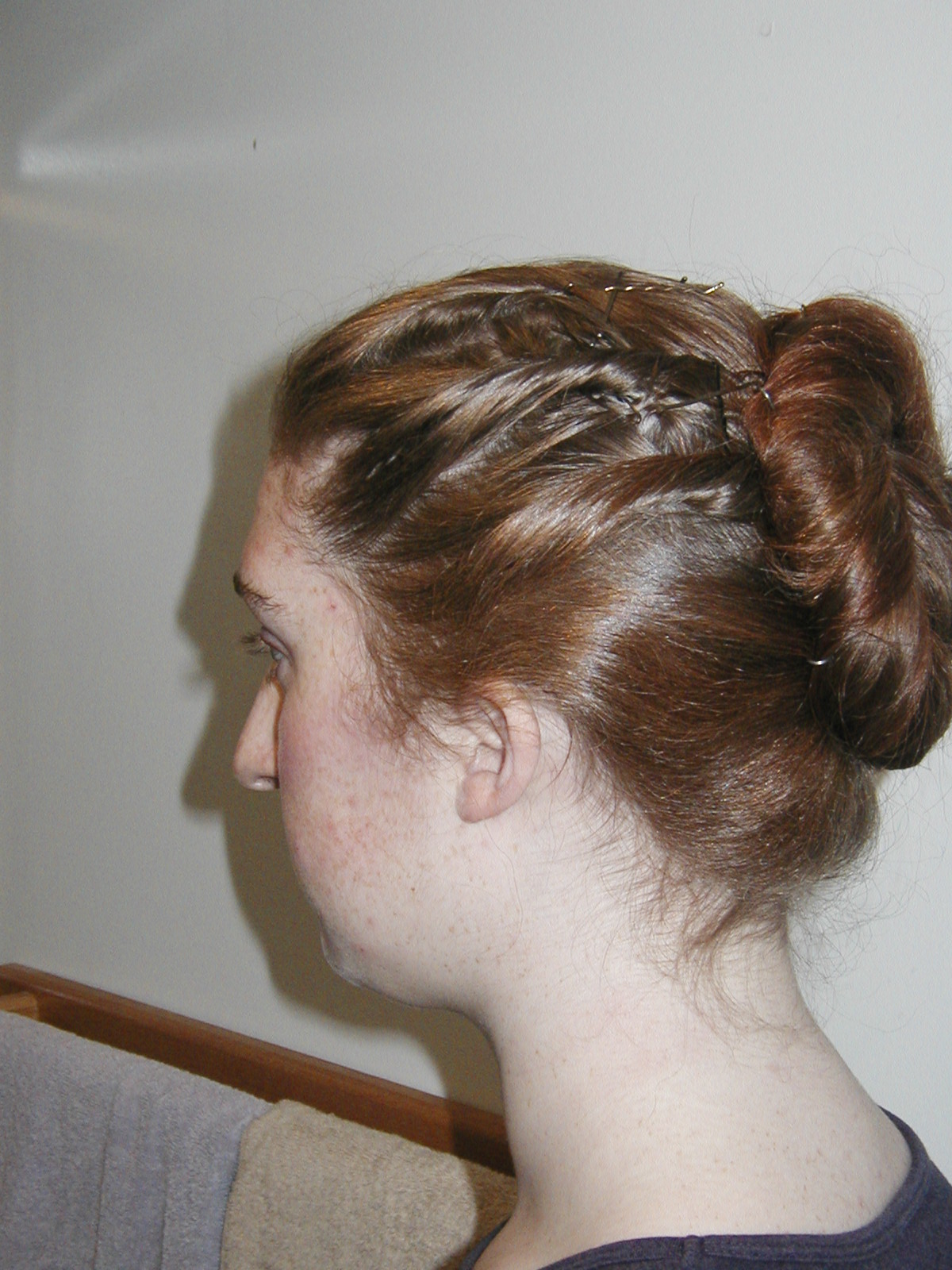 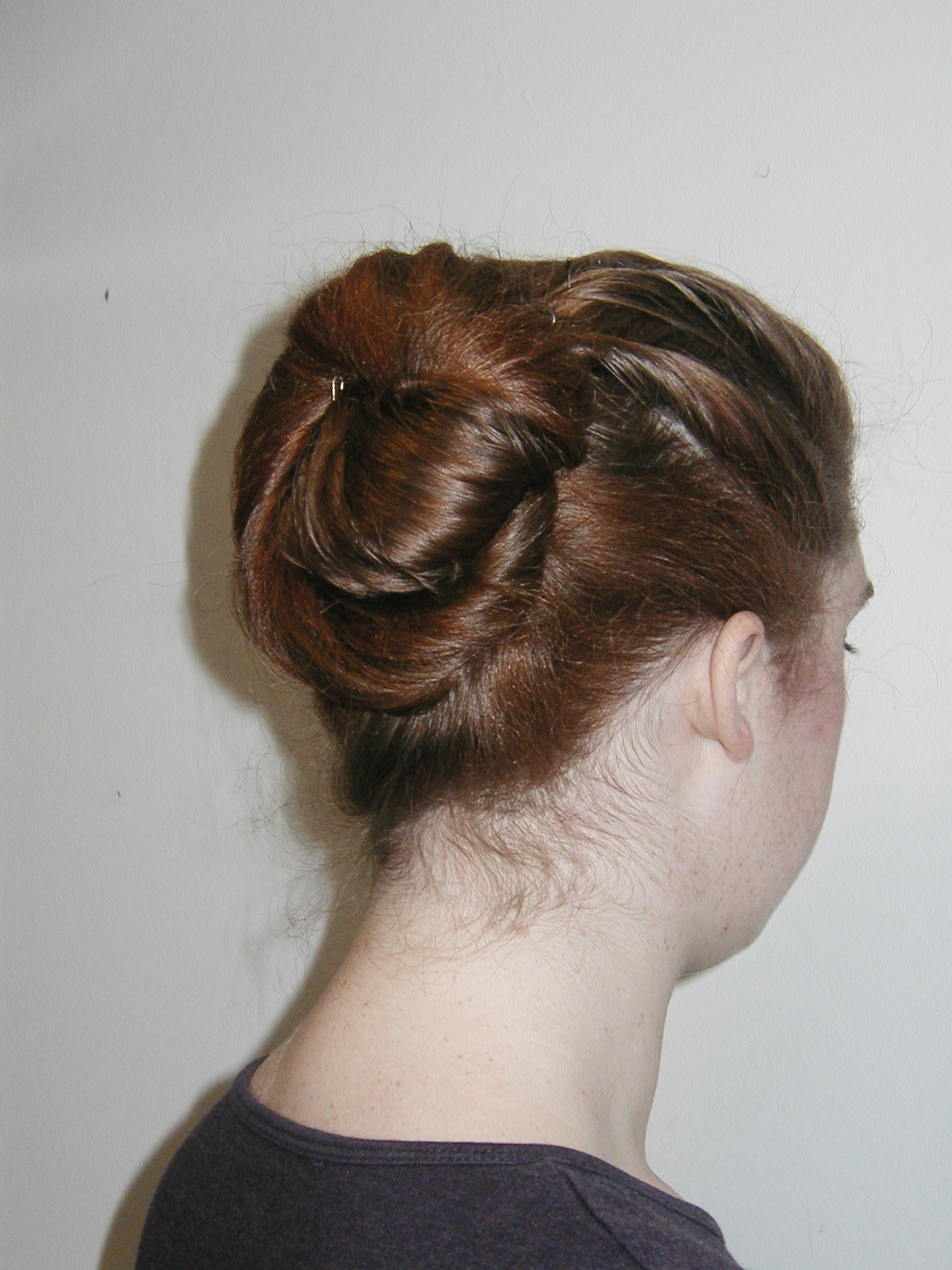
~~~ 4.) This is the favorite style of Marianne Dashwood (shown from the 2008 version of Sense and Sensibility below) and works great for
people who have naturally curly hair, unlike me. You can
make A La Greque in many ways, but the signature of this style is the
band around the head and bun. Any coiffure with this Greek style band
is A La Greque, and you can embellish with jewels, flowers, or a gold
brocade band. 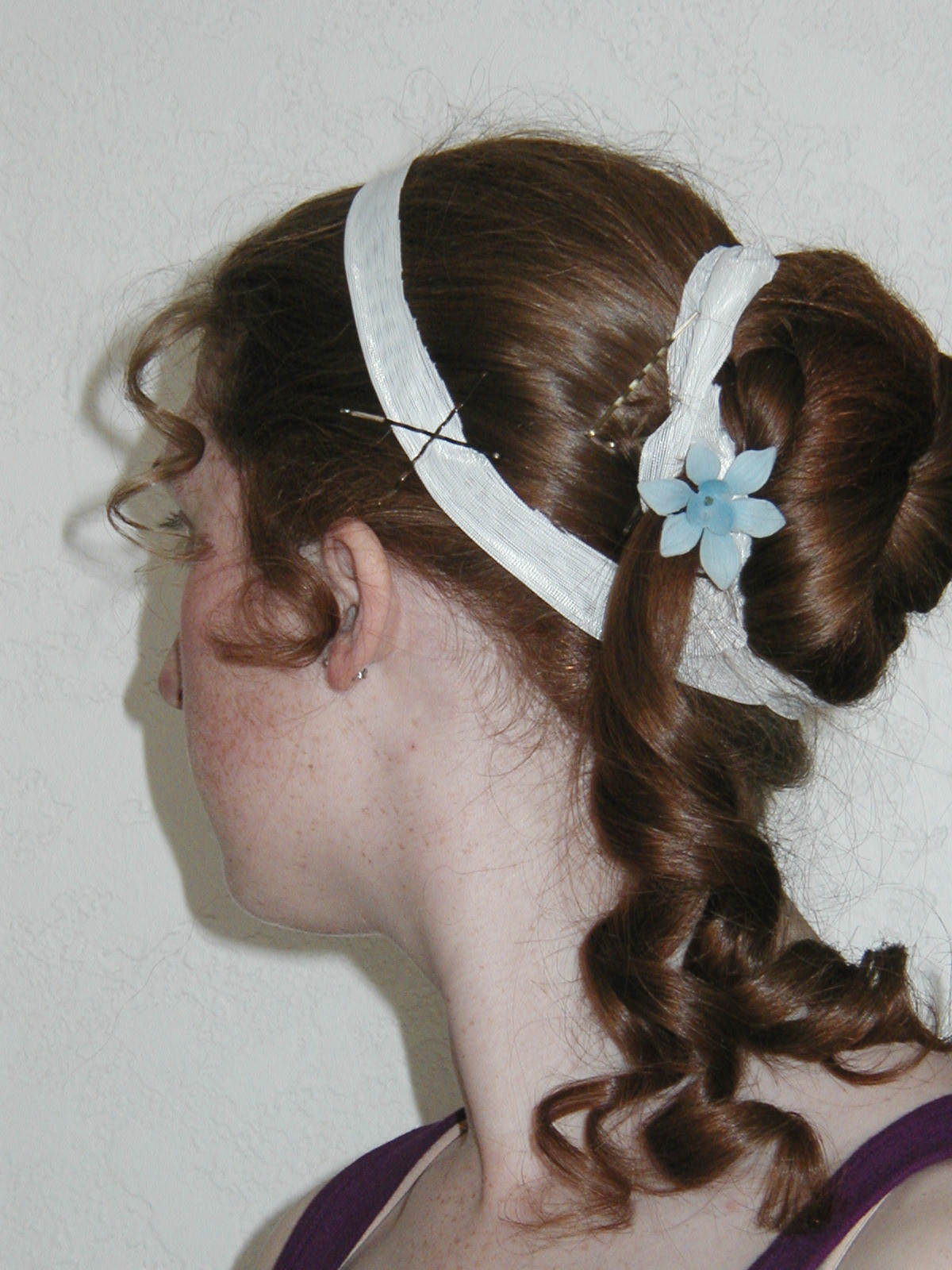 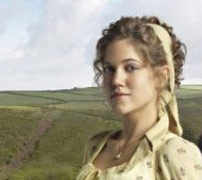 With this style, you definitely need the front
curls around the forehead and ears. If you have curly hair, you can get
away with a much less structured bun in the back and let the curles
fall out all over the place. ~~~ 6.) Feathers were enormously popular throughout the 1800's and can be used in many ways. Here is my version with a high "figure 8" twist (not a bun) and a curl. I cut the hair by my ears so it would curl better, but you don't have to do this. You can do without curls by the ears.
~~~ 8.) This is a style my friend made that is perfect for long straight hair. I don't know exactly how she made it, but the pictures should be pretty self-explanatory. It looks to me like a figure eight with the extra hair hanging out at the bottom but I have a feeling that it is more complicated. ~~~ |
Makeup:
It was popular in the Regency Era to have red lips and rosy cheeks, the opposite of the pale skin fashionable in the previous decades.
Makeup was not common, and most women used facial lotions to achieve the desired complexion. A few women, including women of ill repute and older women, used white face paint or powder. Younger respectable women avoided most makeup.
Many women used rouge, which came in powdered or in liquid form. It was usually a bright carmine or deep pink color, and was so strong only a little had to be used to achieve bright cheeks.
Because of the oriental craze of the period, some women used black makeup to color their eyebrows or eyes. However, it was frowned upon to use any makeup on the eyes, as a natural look was almost impossible to achieve with eye liner. Women began experimenting with mascara at this time, but eye makeup was simply not a fad.
Lip rouge was extremely frowned upon, yet some young debutantes still wore it. It would have looked like the translucent, palely colored lip gloss of today.
Because everyone wanted white teeth, tooth powders were widely sold, but did little good. They may have cleaned teeth a little, but not enough to cause a noticeably whiter smile.
So while makeup was publicly unpopular during the Regency Era, many women used a little to make up for natural deficiencies. To sum it up: 'less is more.'
Clothing:
Regency gowns were all empire waisted and came in many colors. Red was a color frowned upon by ladies of good standing, but it was worn by some very fashionable young ladies none-the-less. Since this period tried to emmulate the Classical Period, some gowns were one shouldered and Greek-looking, though such dresses were uncommon. Long and short sleeves went in and out of fashion continuously. Gloves, of many colors but the primary one being white, were always popular, and long gloves were a must for balls and other social gatherings. Hats and bonnets were worn outside all the time, and came in many different fashions. Women never wore bonnets inside, but they sometimes wore lace or linen caps in the home, or a turban or demi-turban to balls and gatherings. Headbands with feathers and beads were also fashionable among the more garish set of party-goers, but for the regular ball attendee a fancy up-do like A La Greque or a braided bun were the norm. Fans were carried by all women, though you never see them in Regency movies. The small jacket worn by women, the pelisse, came in many styles and could be long or short. Women also used shawls for comfort and show. Here is a diagram of many Regency styles, including shawls, pelisses, turbans, bonnets, and capes. Bottom row third from right is a perfect example of a turban. None of these dresses are one-shouldered Greek, though top row middle with the long green shawl is rather like a palla and stolla (Roman), as is bottom row fourth from right.
